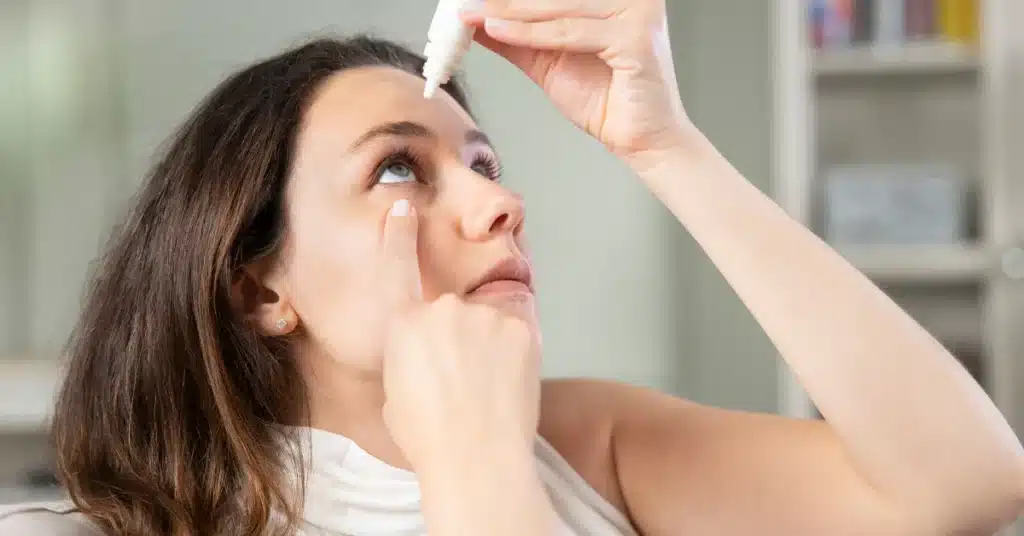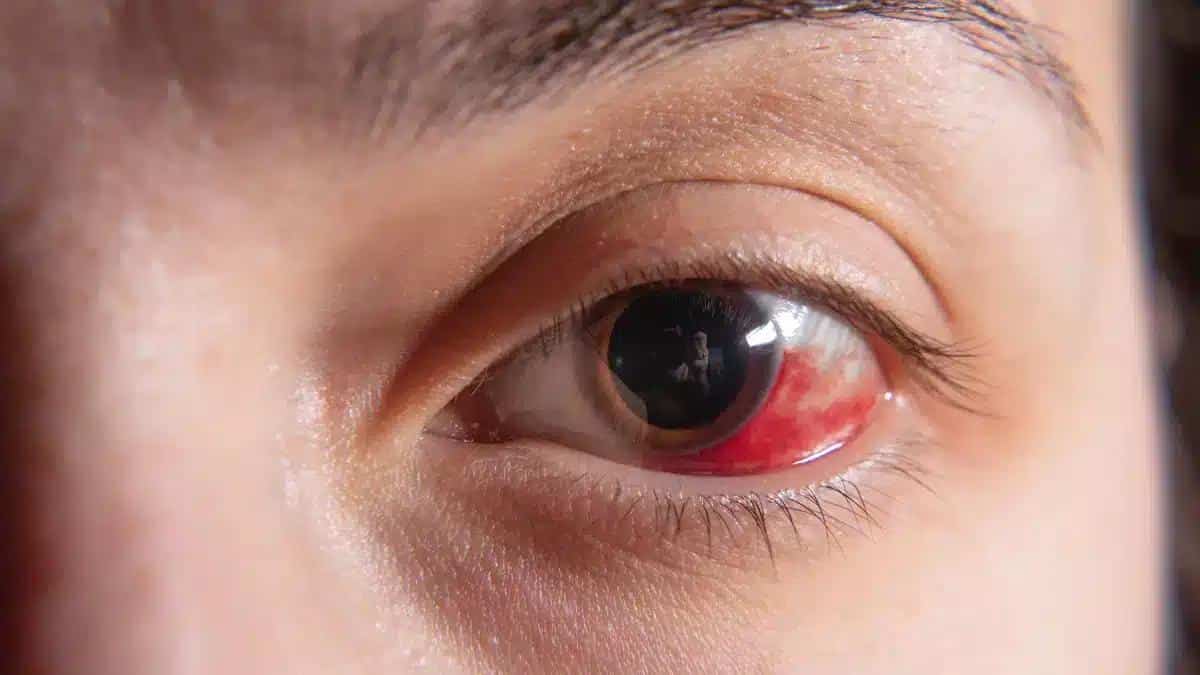Exposure Keratitis, also known as Exposure Keratopathy, affects the cornea in the eye.
It is often caused by environmental factors such as wind, sun, and extended screen exposure.
It is a serious eye disorder that can cause eye damage and discomfort.
Early diagnosis is vital to prevent complications and ensure effective recovery from the condition.
This article will focus on Exposure Keratitis, its symptoms, causes, and treatments available.
What is Exposure Keratitis
Exposure Keratitis is a disorder that causes corneal inflammation due to environmental factors.
In some cases, if your eyelids do not close completely, a part of your eye is exposed to air.
This can cause Dry Eyes, which can develop into Exposure Keratitis.
It is a type of Keratitis which is caused by wind, dust, and extended screen time.
Eye redness, inflammation, excessive tearing, and blurred vision are common symptoms.
Preventive measures include wearing sunglasses with UV protection and using eyewear in windy conditions.
Early diagnosis and proper treatment are important for effective management and avoiding side effects.
Exposure Keratitis symptoms
 Source: Pixeloit
Source: PixeloitDry Eyes are the most common symptom among the various signs of Exposure Keratitis.
Identifying and managing mild Exposure Keratitis symptoms are crucial steps in proactive eye care.
Individuals may have a foreign body sensation in their eyes due to corneal scratching associated with Exposure Keratitis.
Individuals may also experience common Keratitis symptoms such as:
However, due to decreased corneal sensitivity, eye discomfort is often mild.
If left untreated, Exposure to Keratitis symptoms might lead to severe eye damage.
As a result, it is critical to seek the advice of a healthcare professional when seeking treatment for Exposure Keratopathy.
Causes of Exposure Keratitis
Exposure Keratitis stems from exposure to environmental factors such as wind, sun, and dust.
Extended screen time and poor eye protection can also lead to Exposure Keratitis.
The eyelids close completely and regularly in a healthy eye, preserving optimal tear film uniformity.
In some individuals, conditions such as Lagophthalmos can cause incomplete eyelid closing, which can lead to Exposure Keratitis.
Facial Nerve Palsy can also cause Exposure Keratitis.
Reduced corneal sensation resulting from eye infections can also lead to Exposure Keratitis.
Contact lens wearers, those in windy or dusty situations, and those without protective eyewear are most vulnerable.
Recognizing and dealing with these causes of Exposure Keratitis is critical to prevention efforts.
Lagophthalmos is a condition where the eyes cannot fully close, exposing them partially.
Facial nerve palsy is facial muscle weakness due to damage or dysfunction of the facial nerve.
Exposure Keratitis treatment
 Source: Porntep-Kawjun
Source: Porntep-KawjunThe cause and severity of your condition determine Exposure Keratitis treatment.
Artificial tears or lubricating eye drops are usually used to relieve mild Exposure Keratitis.
Your doctor may recommend bandages or antibiotic-treated scleral contact lenses if you have a scratched cornea.
Therapies like passive eyelid closure can help minimize eye damage in some individuals.
However, this condition results in allergic or bacterial eye infections. In that case, you may require anti-allergic or antibiotic eye drops for optimal treatment.
In severe cases, your doctor can recommend surgery to avoid potential risks such as vision loss.
Summing up
Exposure Keratitis is an eye condition that occurs when excessive eye exposure causes corneal damage.
Some symptoms of Exposure Keratitis are eye pain, redness, blurry vision, and excessive tearing.
Individuals may also experience the presence of foreign bodies in their eyes and corneal sensitivity.
Environmental factors such as sun and wind exposure can lead to Exposure Keratitis.
In some cases, the inability to close the eyelid properly or extended screen time can also lead to this condition.
Consult a medical expert if you experience any symptoms of the condition to avoid side effects.
Your doctor may prescribe antiviral or antibiotic eye drops for treating Exposure Keratitis.
In mild Exposure Keratitis, lubricating eye drops or artificial tears relieve symptoms.
It is critical to consult with a doctor before using any treatments to avoid potential risks.
Frequently Asked Questions
What are the signs of Exposure Keratitis?
Signs of Exposure Keratitis include eye redness, irritation, excessive tearing, blurred vision, and a sensation of foreign objects in the eyes.
Wearing protective eyewear and practicing proper hygiene can help prevent this condition.
How can Exposure Keratitis be prevented?
Individuals may wear UV-protective sunglasses and eyewear in windy or dusty environments to prevent Exposure Keratitis.
Taking breaks during prolonged screen use and ensuring adequate eye lubrication with artificial tears can also help.
What are the complications of Exposure Keratitis?
Exposure Keratitis consequences include corneal scarring, corneal ulcers, perforation, and vision loss.
It is a serious eye condition that requires prompt medical attention from an eye doctor.
Is Exposure Keratitis reversible? What are the potential complications?
Exposure Keratitis is often reversible with prompt intervention.
However, complications may include corneal damage, infection, and vision impairment if left untreated.
Seeking timely medical attention is crucial to minimize potential complications and ensure optimal recovery.
What is the cause of Exposure Keratitis?
Exposure Keratitis is caused by improper eyelid closure induced by medical disorders such as Lagophthalmos and eyelid malposition.
It is critical to treat these underlying problems to treat Exposure Keratitis effectively.
As a result, seek accurate medical advice from a reputable ophthalmologist.
When referencing outside resources, GoodrxMedicine always provides full citations. To learn more about the measures we use to maintain the quality of our content, please review our Content Information Policy.










